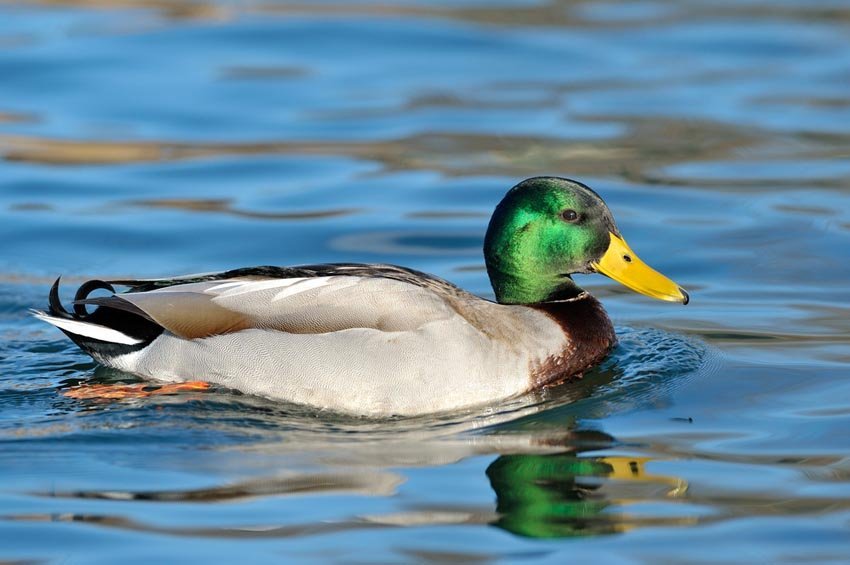Mallard Duck

Mallard Duck Overview
The mallard duck is one of the most known ducks. It is common throughout temperate and subtropical regions of North America and Eurasia. Its habitat is in all kinds of wetlands and can be found in the wild as well as in urban park ponds. Adult males have a shimmering green or blue head while the female's is a light brown. Mallard ducks feed on water plants.
Frequently Asked Questions
What does a Mallard Duck look like?
Male mallards have a shimmering green or blue head, yellow bill, and grayish body. Females are mottled brown with an orange bill and are more camouflaged in appearance.
Where do Mallard Ducks live?
Mallards live in freshwater wetlands, ponds, lakes, rivers, and even city parks. They are highly adaptable and found across North America, Eurasia, and introduced populations in Hawaii.
What do Mallard Ducks eat?
They primarily feed on aquatic plants but will also eat insects, small fish, crustaceans, and food scraps in urban areas.
Where do Mallard Ducks nest?
Mallards typically nest on the ground near water, hidden in tall grasses or vegetation. They lay 8–13 eggs per clutch, which hatch after about a month.
Are Mallards native to Hawaii?
No. Mallards were introduced to Hawaii and are now widespread across the islands, especially in wetlands and urban park ponds.








